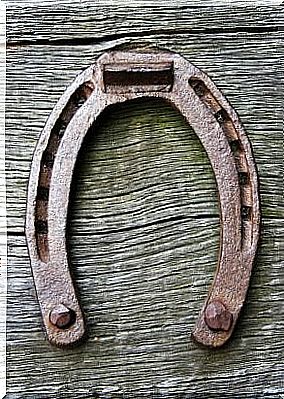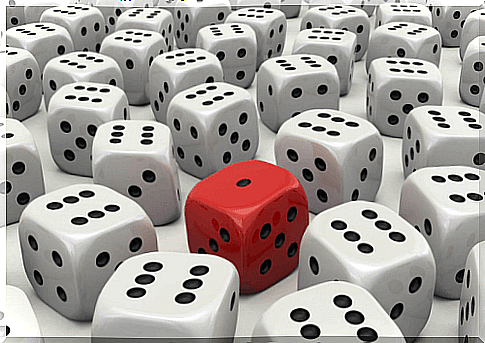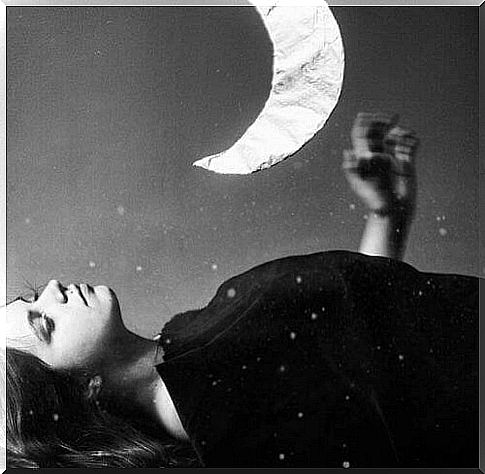Why Horseshoes Are Considered Good Luck Charms
Since ancient times, horseshoes have been regarded as good luck charms.

Horseshoes are the oldest lucky charms in history. The effects attributed to it range from luck to dispelling doubts and even conflicts. Horseshoes, however, are nothing more than pieces of metal, the peculiarity of which lies in their U-shape. They are primarily used on horses to reduce wear and tear on their hooves.
To this must be added the effects of the position of the horseshoe. This position will produce different effects:
- Directed down, it will bring protection
- If it is pointed upwards it will bring good luck
The origin of the horseshoe as a lucky charm

The horseshoe began to become a lucky charm when our ancestors realized that its U or oval shape resembled that of the crescent moon. Thus, already in the first civilizations, stars such as the Sun or the Moon were considered as carriers of luck and it was believed that they made women fertile.
As a result, the idea that irons could bring good luck spread. That is, it was the ancient Greeks who introduced the horseshoe into Western civilization. Since then, the horseshoe has been considered a good luck charm. But it was in the 10th century, through the figure of Saint-Dunstan, that horseshoes began to be hung on doors to protect houses.
The legend of Saint-Dunstan
Dunstan was a blacksmith who, through his faith, became the Archbishop of Canterbury. But why horseshoes and not some other object made by this blacksmith? Legend has it that the Archbishop once received a visit from a man who begged him for horseshoes. These horseshoes were not for his own feet. These would have strangely resembled the hooves of an animal.
It was then that Dunstan understood the reality: it was the devil. Saint Dunstan shrewdly agreed to follow through on Satan’s request, without telling him that he knew who he was.
For that, he told her that the only way to put on such horseshoes was to hang them on the wall. Satan, surprised, accepted. This is when the penance began. San Dunstan began to nail the horseshoes with nails, so the devil demanded his mercy.
Saint Dunstan took advantage of the devil’s request for pardon to demand something in return. He then asked her not to enter the house of people who had a horseshoe hanging on their door. Satan, wounded, accepted.
This story quickly spread among the Catholic community. Word of mouth has changed history over time, but the idea of protection, even luck, has endured.
History of the horseshoe

As we have already mentioned, the horseshoe was already in use as a good luck charm long before the 10th century. Regarding non-Christians, why did they use horseshoes to attract good luck?
It would seem that the Greeks believed that metal was a material that feared evil. Perhaps this was due to its use in combat, these were used to winning with weapons made of metal. In addition, as indicated above, its half-moon shape invited to reflect on the ancient civilizations that this star, through this object, brought fertility and good luck.
To all this, we must add the magic number: the 7. And it is by coincidence that there are just 7 nails necessary to drive the horseshoe up to the hooves of a horse.
Finally, horseshoes were used as objects to protect against the magic of witches in the Middle Ages. Indeed, popular wisdom believed that witches rode a broomstick because horses were afraid of them. Therefore, in Russia, blacksmiths were considered to be men of white magic. These would have had the power to scare the witches.
In conclusion
This legend was so widespread that blacksmiths even began to perform weddings and use irons as a symbol of union. In addition, the anvils became the only places where rings could be forged ; because these received some of the “magic” which was then transferred to other objects.
Ultimately, the history of horseshoes is long, ancient and sometimes confusing; what is certain is that many civilizations, for one reason or another, have regarded this object as a lucky charm. What is interesting is to note this same symbolism that we find in various peoples, sometimes very distant from each other.









